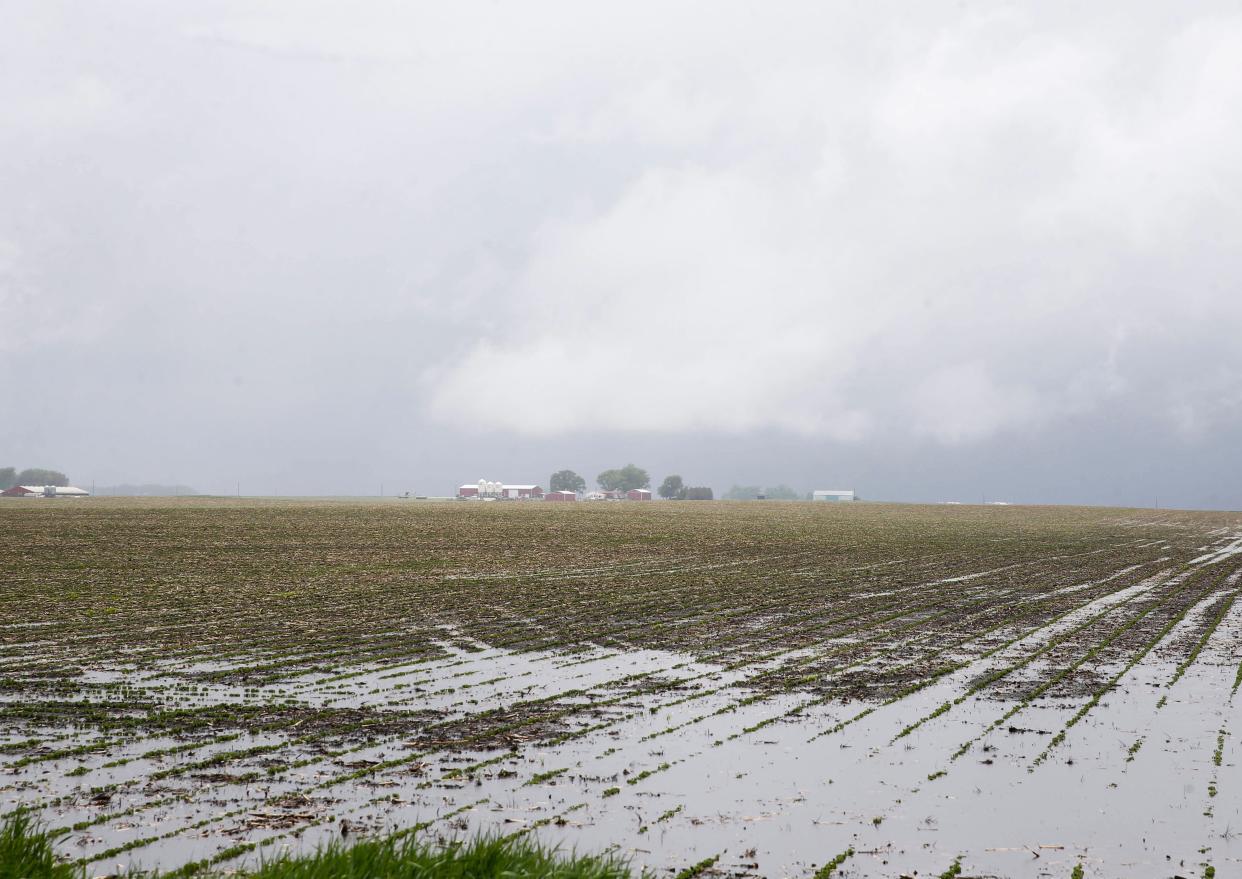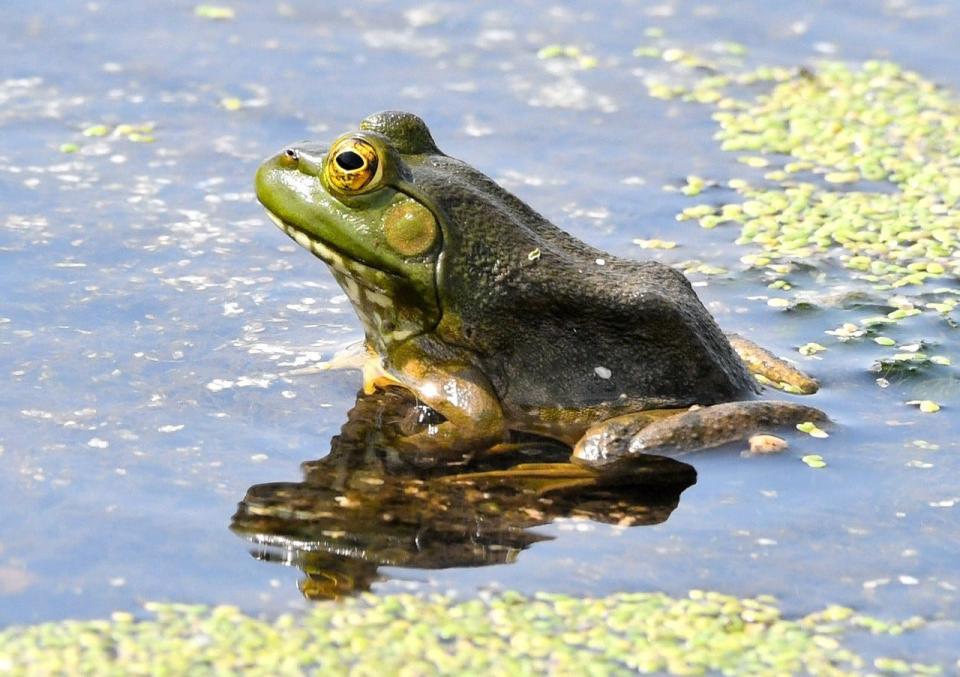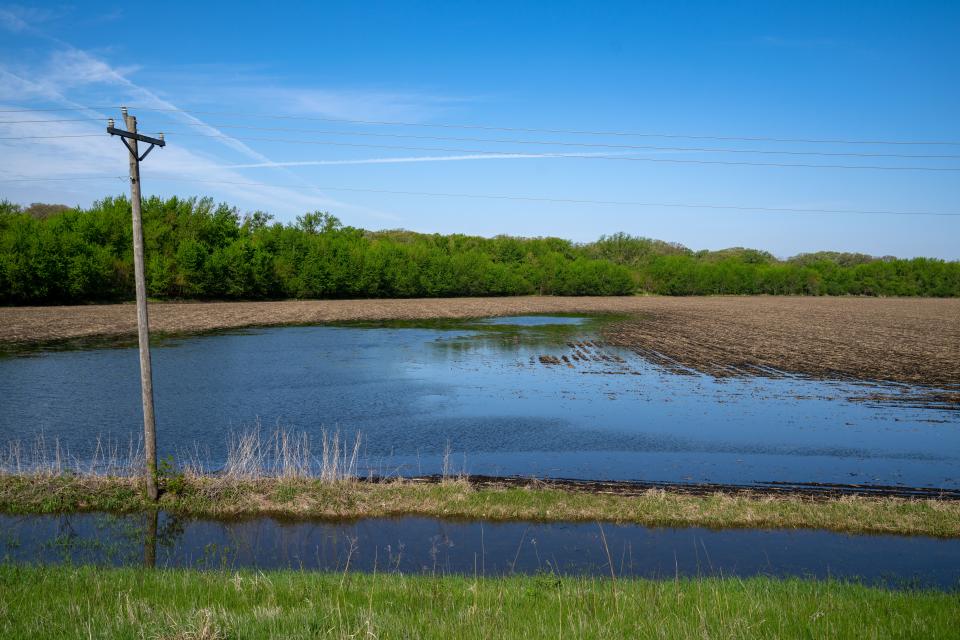'Significant repercussions': Supreme Court limits government power to curb water pollution

- Oops!Something went wrong.Please try again later.
- Oops!Something went wrong.Please try again later.
WASHINGTON – In a decision long awaited by Iowa farmers, the U.S. Supreme Court on Thursday sided with a couple who have been battling the Environmental Protection Agency for more than a decade over water quality regulations affecting their plan to develop a property in the Idaho panhandle.
The case, which centered on the scope of the 1972 Clean Water Act, was arguably the most important environmental decision the Supreme Court has handed down since a majority last year invalidated an EPA effort to regulate power plant emissions. The plaintiffs asked the court to provide a clearer definition of what the law meant when it gave the agency power to regulate the "waters of the United States" ― often referred to as WOTUS.
In an opinion written by Justice Samuel Alito and joined by four other conservative justices, the court limited the scope of the EPA's ability to control wetland pollution. That's important because, in addition to the wetlands themselves, the water at issue often feeds into the rivers and lakes that are more clearly covered by federal pollution controls.
What did the Supreme Court rule in the EPA case?
Majority: A majority of the court said that the lack of clarity about what types of waters are covered by the Clean Water Act was difficult for property owners to understand.
A "staggering array of landowners," Alito wrote, "are at risk of criminal prosecution" if they don't realize their property is subject to federal environmental rules. Joining Alito's opinion were Chief Justice John Roberts and Justices Clarence Thomas, Neil Gorsuch and Amy Coney Barrett ― all Republican appointees.
Kavanaugh warns of repercussions: Justice Brett Kavanaugh, joined by three liberal justices, said that while he sided with the plaintiffs and against the EPA, he disagreed with the court's definition of what types of waters should be subject to government regulation. The court's ruling, Kavanaugh warned, would have "significant repercussions for water quality and flood control throughout the United States." Joining Kavanaugh, a Republican appointee, were Justices Sonia Sotomayor, Elena Kagan and Ketanji Brown Jackson, all Democratic appointees.
Bottom line: The court's opinion adopts a new, narrower standard that will limit how much water the EPA may regulate. That's a win for developers and agricultural interests and a loss for environmentalists.

Air: Supreme Court rules against EPA effort to regulate power plant emissions
Water: Supreme Court kicks off a new term with controversial cases
How did the EPA case arrive at the Supreme Court?

Michael and Chantell Sackett purchased a vacant lot in a residential subdivision in Idaho in 2004. The couple obtained the county permits needed to develop the site but the EPA informed them shortly after they began construction that the agency viewed the land as subject to its review because it contained wetlands about 300 feet from Priest Lake.
During oral arguments in October, several members of the court's conservative majority questioned the standard the EPA uses to determine if a wetland is subject to federal permitting requirements and oversight. Chief Justice John Roberts summed up the challenge facing the court by noting that water often flows underground in ways that are difficult to predict or measure: "Water goes everywhere, eventually."

The Sacketts' suit was on its second ride at the Supreme Court. In 2012, a unanimous court held that the couple could file their lawsuit even though the EPA asserted it had not taken a final action in the dispute. As the litigation wound its way through lower courts again, the San Francisco-based U.S. Court of Appeals for the 9th Circuit sided with the EPA and upheld the agency's order against the Sacketts.
What is the potential impact of the EPA decision?
In its decision Thursday, the Supreme Court not only overturned the 9th Circuit but set a new standard for what types of water are covered by the Clean Water Act.
The court's opinion means that the EPA will have the ability to regulate only wetlands with a "continuous surface connection" to a larger body of water in a way that makes them "indistinguishable" from those large bodies. That's a departure from a more encompassing standard that required the EPA and landowners to consider the chemical and biological connection between the wetland and the larger body of water.
The case has been closely watched by environmentalists, developers and farming groups who have long fought over how far the EPA's reach extends beyond navigable lakes and rivers and smaller streams and wetlands that feed into ― and pollute ―those larger bodies of water.
What are people saying about the Supreme Court's wetlands decision?
Environmental groups slammed the decision.
"The Sackett decision undoes a half-century of progress generated by the Clean Water Act," said Sam Sankar, vice president of programs at Earthjustice. "Almost 90 million acres of formerly protected wetlands now face an existential threat from polluters and developers."
“We are very disappointed with the Court’s decision," Scott Strand of the Environmental Law & Policy Center, a Chicago-based group with an active Iowa office, said in a statement. "Everyone involved has understood for fifty years, since the Clean Water Act was passed, that protecting our nation’s lakes, rivers, and streams requires protecting upstream tributaries and adjacent wetlands as well. Wetlands hold and filter out pollutants, they retain stormwater and reduce flooding, they provide critical habitat for wildlife, and they soak up carbon. But now, contrary to the science and contrary to everyone’s reasonable expectations, most of those wetlands are going to lose federal protection. The Court clearly got this one wrong, at great cost to the environment and to taxpayers.
“Here in the Midwest, we have lost most of the wetlands the region once had, through indiscriminate drainage and development. The burden of protecting the wetlands we still have will now fall back on state and local governments, who have, at best, a checkered record. Unfortunately, the Court’s decision means dirtier water, more uncontrolled flooding, more net carbon emissions, and a significant loss of wildlife habitat.”
Those supporting the Sacketts said the decision would make it easier for property owners to know where they stand with the EPA:
U.S. Sen. Joni Ernst, R-Iowa, a member of the agriculture committee – “I’m glad to see the Supreme Court rightfully and unanimously blocked Biden’s ill-conceived Waters of the United States rule. The federal government has no authority to impose blanket jurisdiction over puddles, waters, and wetlands with vague, overreaching regulations on behalf of Biden’s ever-changing climate agenda. This is a big WIN for Iowa, where nearly every industry is impacted by WOTUS, including 46,000 small businesses and countless farmers. I’ve long fought to put in place a permanent, clear, and commonsense WOTUS definition, and will continue working to bring much-needed certainty to Iowa’s job creators.”
U.S. Rep. Randy Feenstra, who represents northwest Iowa – “I am thrilled that the Supreme Court ruled in favor of America’s heartland over President Biden’s radical EPA. This is a huge win for Iowa farmers and rural America. The Biden Administration’s burdensome WOTUS rule — which would impact around 97% of Iowa’s land — raises costs for our farmers, saddles our rural communities with crushing red tape, and empowers federal bureaucrats over America’s producers. This decision provides our rural communities with much-needed certainty and will devastate the EPA’s reckless federal overreach."
West Virginia Attorney General Patrick Morrisey, a Republican – “We now have a clearer definition for Waters of the United States, and we’re pleased the Supreme Court ruled in a way that state lands and waters are less subject to the whims of unelected bureaucrats.”

This article originally appeared on USA TODAY: Clean Water Act: Supreme Court rules against EPA in years-old dispute

